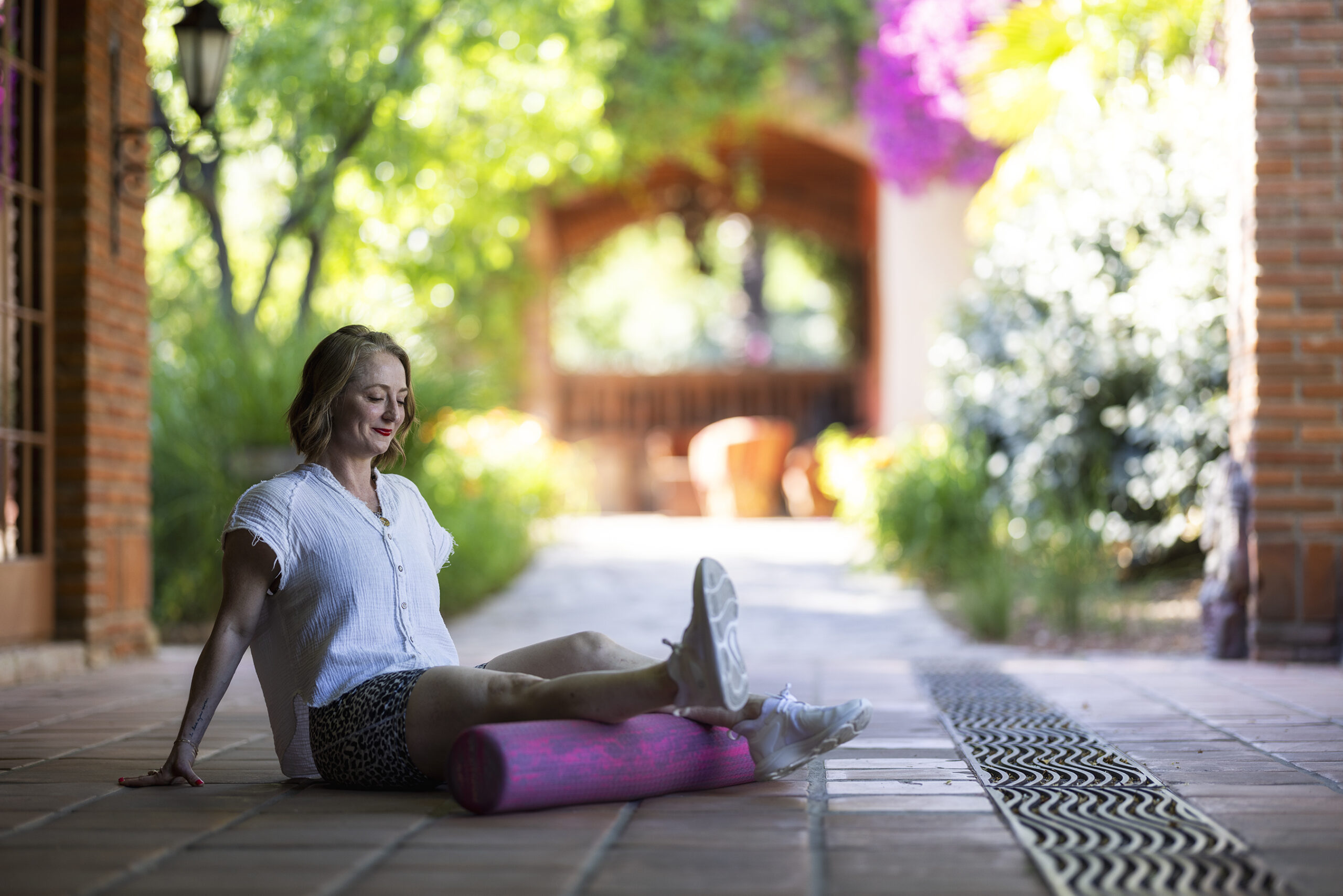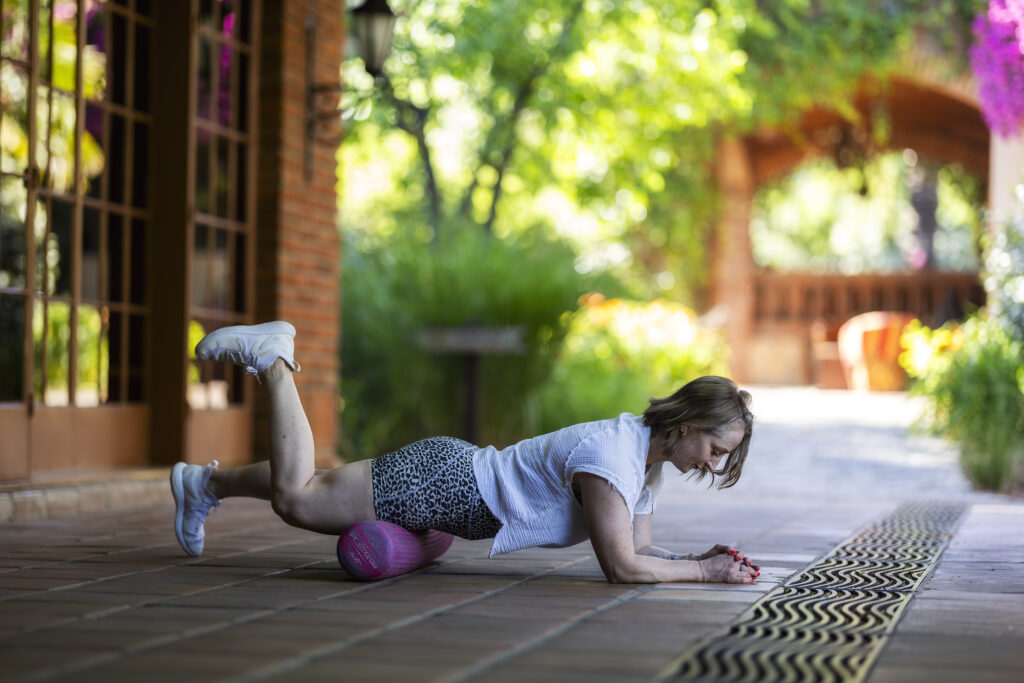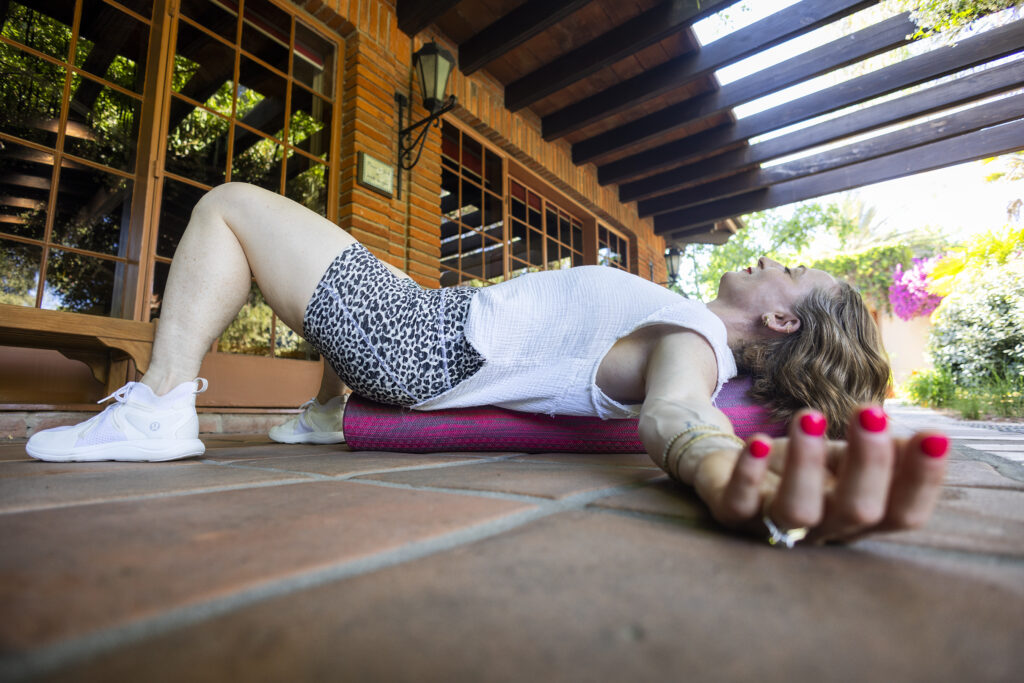Foam Roll Your Way to Better Joints and Flexibility!

Foam rollers aren’t just those weird fat foam noodle things that never fit in your closet—they’re a valuable tool for enhancing joint health and aiding recovery. In our Recovery and Foam Rolling Classes with Guest Instructor Heather Corndorf, we had a fantastic time learning three essential exercises and some of the benefits of bringing a foam roller into our wellness routine.
- Hydrating Fascia:
- Foam rolling helps hydrate the fascia, the connective tissue that supports muscles, joints, ligaments, and tendons.
- Increased blood flow to the fascia prevents it from pulling on joints, reducing soreness and stiffness.
- Supporting Muscles, Not Joints:
- During workouts, it’s crucial to target muscles that support joints rather than the joints themselves.
- For instance, knee pain might not stem from the knee but from tension in surrounding areas like the IT band or TFL muscle.
- Common Mistakes:
- Rushing through foam rolling can lead to ineffective results. It’s essential to move slowly, breathe deeply, and listen to your body.
- Maintaining proper form is crucial; avoid overarching or letting the lower back sag during exercises like quad or spine rollouts.
- Duration and Frequency:
- Before workouts, aim for a few passes over tight areas to increase blood flow. Post-workout, spend longer (about 1-2 minutes per area) to aid recovery and enhance flexibility.
- Consistency is key; incorporating foam rolling into daily routines, even during leisure activities like watching TV, can significantly impact joint and muscle health over time.

- Essential Foam Rolling Exercises:
- Calf Rollout:
- Purpose: Enhances ankle mobility and aids in preventing falls by hydrating calves, feet, and knees.
- Execution: Vary pressure and technique based on individual tightness. Roll slowly, explore different angles, and adjust as needed.
- Quad Rollout:
- Purpose: Relieves tightness in quadriceps, which can alleviate tension in hips and IT band.
- Execution: Focus on both sides of the quad, adjusting pressure and technique. Maintain core engagement and avoid overarching to protect lower back.
- Supine Spine Rollout:
- Purpose: Provides spine support and relaxation, benefiting posture and overall back health.
- Execution: Lie on the foam roller with knees bent and feet flat. Allow the spine to relax and adjust positioning to ensure full spine contact. This position helps open shoulders and chest while supporting the spine.

Like a secret weapon hidden in plain sight, foam rolling emerges not just as a remedy for immediate muscle soreness but as a cornerstone of long-term joint health. Research confirms its prowess: after the delayed-onset muscle soreness, foam rolling rolls in like a gentle giant, reducing tenderness and restoring vitality to weary muscles. Whether it’s a 20-minute session on a high-density roller post-workout or a ritual repeated every 24 hours, this self-massage technique proves its mettle in enhancing recovery and preserving performance. Athletes, pragmatic and discerning, embrace foam rolling as a beacon of affordability, simplicity, and time efficiency—a therapeutic ally that doesn’t just alleviate discomfort but nourishes the very fabric of their physical resilience. By hydrating fascia, untangling knots, and fortifying muscles, foam rolling isn’t just a tool; it’s a ritual of self-care that sustains overall wellness and the fluid grace of mobility. See you in class.